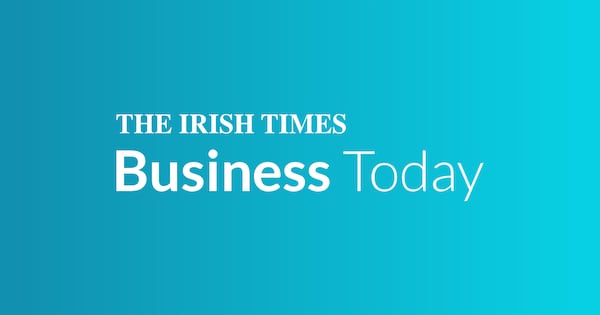The United States has confirmed it “intends” to make sure any future tariffs on pharmaceutical and semiconductor imports from the European Union (EU) would be capped at 15 per cent, in a much-anticipated joint statement on the tariff deal agreed between the two sides.
The statement publicly firms up the details of the EU-US deal on tariffs struck by United States president Donald Trump and European Commission president Ursula von der Leyen at the end of last month.
The statement will come as some relief to the Government and the large pharmaceutical sector in the Republic, which to date had been relying on word from the EU side, that the deal capped future US tariffs on pharma at a 15 per cent rate.
The deal saw European countries head off Mr Trump’s threats of cripplingly high import taxes on trade, by agreeing to stomach 15 per cent levies on products sold across the Atlantic.
RM Block
Higher tariffs on EU-made cars will be brought down to that blanket 15 per cent as part of the deal.
EU trade commissioner Maros Sefcovic, who was heavily involved in the talks, described the agreement as “the most favourable trade deal the US has extended to any partner”.
Mr Trump has used tariffs to upend global trading relations and extract concessions from US allies in a series of deals.
The US president set a blanket 10 per cent import levy on EU goods as part of his “liberation day” agenda in April, and threatened the 27-state union with much higher rates of 20 to 50 per cent if a trade agreement was not struck by August.
The commission, the executive arm that negotiated for the EU, has said the tariff deal was necessary to avoid a destabilising trade war between the two economic powers.
The Trump administration has yet to introduce any tariffs on pharmaceuticals and semiconductors, two strategic sectors the White House has talked about targeting with specific measures, to bring industry and production back to the US.
A senior commission official said the EU executive expected Mr Trump to roll out tariffs on pharma products soon and the deal meant Brussels would have its “insurance policy” against higher rates.
A joint EU-US statement on the deal, published on Thursday, noted aircraft, aircraft parts, generic pharmaceuticals and cork products would be exempt from tariffs.
EU negotiations have been pressing for its exports of spirits, including whiskey and wines, to also avoid the blanket 15 per cent tariff rate.
The joint statement said the two sides agreed “to consider other sectors and products” that might be subject to lower rates, which had applied before Mr Trump’s return to office.
Speaking on Thursday in Brussels, Mr Sefcovic said the agreement had “locked in” significant exemptions and work would continue to push for more products to escape the 15 per cent tariff rate.
The joint statement said the EU had agreed to “substantially” increase the amount of military equipment and weapons it bought from the US.
It said the EU “intends to procure” $750 billion worth of US liquefied natural gas, oil, and nuclear energy over the coming years to 2028.
The statement said the EU intends to buy “at least $40 billion worth of US AI chips for its computing centres”.
Tánaiste and Minister for Foreign Affairs and Trade Simon Harris said the Government would push “to see what other carve outs can be made in areas of interest for Irish exporters”.
Taoiseach Micheál Martin said the tariff exemptions for aircraft was a win for Ireland, due to its large aviation sector.
“Given the scale of the pharmaceutical and semiconductor sectors in Ireland, it is important that the joint statement confirms that 15 per cent is a ceiling that will apply to EU exports in these areas in all circumstances,” he said.
Mr Sefcovic said the 15 per cent cap included in any pre-existing US tariffs that had been charged on EU products, rather than having those levies capped on top of the blanket rate, which was not a feature of other countries’ deals.
The alternative to a EU-US deal would have been a trade war with “sky high tariffs,” the commissioner said. Such a scenario would have hurt the European economy and businesses, potentially costing millions of jobs.
The tariff agreement did not reduce 50 per cent tariffs the US has charged on imports on steel and aluminium. The joint statement references the US and the EU co-operating closer together through some type of tariff quota scheme.
The joint statement also said European companies “are expected to invest an additional $600 billion across strategic sectors in the United States through 2028”.
“This investment reflects the European Union’s strong commitment to the transatlantic partnership and its recognition of the United States as the most secure and innovative destination for foreign investment,” it said.















